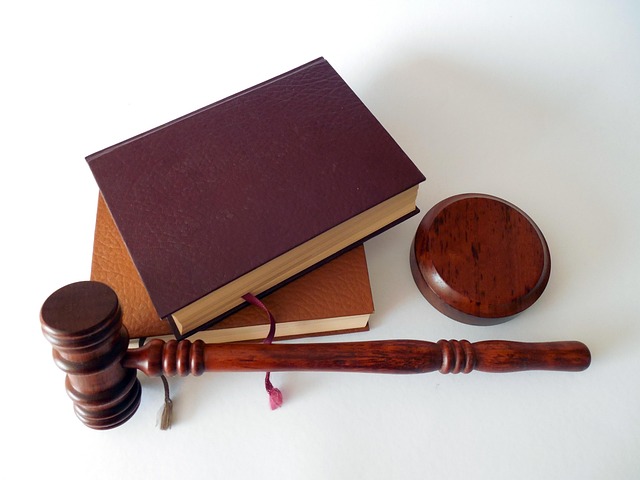Selecting law office equipment: prioritize print quality (1200 x 1200 DPI+ for clarity), paper handling (diverse media types, duplex printing, large trays), cost-efficiency (color vs monochrome), connectivity (Wi-Fi, Ethernet, network protocols, encryption), and energy efficiency (low power modes, efficient ink/toner) to meet legal document demands.
Choosing the right office printer for your law office equipment needs is crucial. This comprehensive guide breaks down the key features to look for, ensuring you make an informed decision. From print quality and paper handling to color vs. monochrome options, connectivity, and energy efficiency, we cover it all. Maximize productivity and minimize costs with a printer that aligns with your legal practice’s unique requirements.
- Print Quality and Resolution Considerations
- Paper Handling Capabilities and Capacity
- Color Printing Versus Monochrome Options
- Connectivity and Network Compatibility
- Energy Efficiency and Running Costs Assessment
Print Quality and Resolution Considerations
When selecting a printer for your law office equipment, print quality and resolution are paramount. Opting for a device that delivers crisp, sharp text and vibrant graphics ensures that your documents, contracts, and legal briefs maintain their professionalism and accuracy. High-resolution printers, typically offering 1200 x 1200 DPI or better, can produce detailed output, making them ideal for presenting complex information clearly.
Consider the nature of your work; if your law office regularly handles intricate documents with fine lines or delicate color gradients, a printer with superior resolution will be invaluable. Moreover, ensuring consistent print quality across various media types, such as plain paper, cardstock, and photo paper, is essential to meet the diverse needs of legal practices.
Paper Handling Capabilities and Capacity
When choosing a printer for your law office equipment needs, paper handling capabilities and capacity are paramount. Look for printers that offer a wide range of media types and sizes to accommodate various legal document formats, from standard letter-size papers to larger briefs and contracts. Consider models with automatic duplex printing, which not only saves time by printing on both sides automatically but also reduces overall paper wastage.
The capacity of the paper tray is another critical factor. A high-volume law office may require a printer with a large input tray capable of holding several reams of paper at once to avoid frequent refilling. Some advanced models even feature adjustable paper trays, allowing you to customize the settings based on your specific printing tasks. This ensures seamless workflow and minimizes disruptions during busy periods.
Color Printing Versus Monochrome Options
When considering a new office printer, one of the key decisions is whether to opt for color printing or stick with monochrome (black-and-white) options. For law offices managing extensive documents, color printing can significantly enhance visual clarity and impact, making it easier to spot critical details in contracts, legal briefs, and other important paperwork. However, this feature comes at a cost—both financially and in terms of resource consumption. Monochrome printers, on the other hand, offer a more economical and environmentally friendly solution, ideal for high-volume document printing where color is not always necessary.
In the realm of law office equipment, striking the right balance between visual communication needs and operational costs is crucial. Understanding your specific requirements—from the frequency of color printing to budget constraints—will help guide your decision. Many modern printers now offer versatile solutions, allowing for seamless switching between color and monochrome printing as needed, ensuring you get the best of both worlds without compromising on efficiency or quality.
Connectivity and Network Compatibility
In today’s digital age, a law office’s efficiency heavily relies on seamless connectivity and network compatibility in their printer. Look for printers that offer Wi-Fi or Ethernet connectivity to facilitate easy integration with existing office networks. This ensures multiple devices can access printing resources wirelessly, fostering a connected workflow among legal professionals and support staff.
When selecting law office equipment, prioritize printers that support common network protocols like FTP, SMTP, and HTTP. These protocols enable direct printing from various applications and cloud-based services commonly used in legal practices. Compatibility with network security standards, such as SSL/TLS encryption, is also crucial to protect sensitive case documents during transmission.
Energy Efficiency and Running Costs Assessment
When evaluating printers for your law office equipment needs, energy efficiency and running costs should be at the top of your list. Modern printers are designed with advanced eco-friendly features that significantly reduce power consumption, making them a wise investment for any legal practice. Look for models that offer low energy modes, automatic power-off functions, and efficient ink or toner systems to minimize electricity usage.
Assessing running costs involves considering the overall expense of ownership. Check print speeds and the cost per page, as faster printers with competitive pricing can save your law office money in the long run. Additionally, consider the frequency of use; high-volume printing demands may require more robust machines with longer lifespan and lower maintenance costs, ensuring they fit seamlessly into your existing workflow and budget constraints.
When selecting an office printer for your law office equipment needs, consider print quality, paper handling, color versus monochrome options, network compatibility, and energy efficiency. By evaluating these key features, you can choose a printer that not only meets but exceeds the demands of your legal practice, ensuring precise document production while optimizing operational costs.
